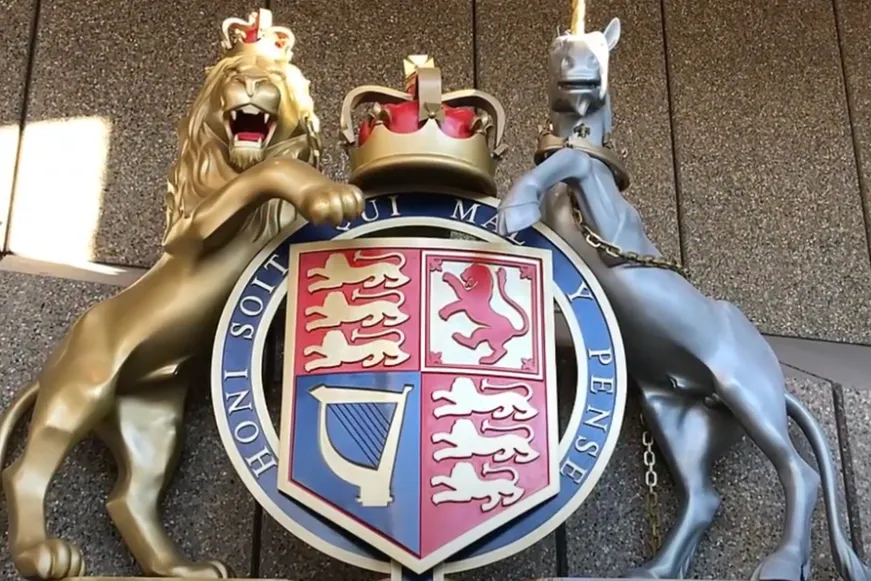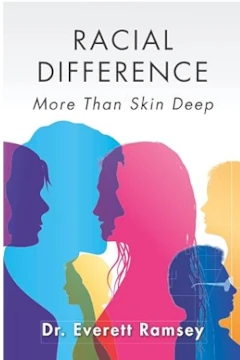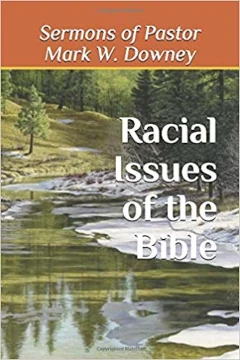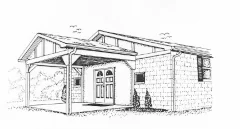From Healthcare to Sickcare
How Rockefeller and Carnegie Rewired Modern Medicine and Why It Still Affects You Today
By Harald Zieger
October 26, 2025
Few systems are more influential — or more taken for granted — than modern medicine. Most of us grew up believing that the medical system has always been scientific, trustworthy, and built to help us heal. But the truth is more complicated.
In the early 1900s, two of the most influential figures in American history — John D. Rockefeller and Andrew Carnegie — played a pivotal role in reshaping medicine.
This transformation continues to impact how we’re diagnosed, treated, and even taught to think about health today. This isn’t about conspiracy — it’s about following the money, the motives, and the long-term impact of decisions made over a century ago.
If you’ve ever wondered why so much of modern medicine feels focused on prescriptions instead of prevention, this story is for you.
What Medicine Looked Like Before 1910
Before the 20th century, the medical world in America was a patchwork of healing systems, rooted in cultural tradition, hands-on observation, and community-based care. There wasn’t one dominant way to treat illness — there were many.
People turned to:
- Homeopathy — Founded by Samuel Hahnemann in the 1700s, it worked with the idea that “like cures like.” It emphasized ultra-diluted natural remedies and the body’s innate ability to heal itself.
- Naturopathy — A holistic approach using diet, herbs, sun, rest, and hydrotherapy to support natural healing processes.
- Eclectic Medicine — A uniquely American blend of botanical and empirical treatments rooted in Indigenous knowledge and scientific observation.
- Midwives, folk healers, and community caregivers — In rural areas and underserved communities, healing was often led by women, elders, and traditional practitioners.
This was medicine rooted in relationship, tradition, thousands of years of experience, and accessibility. It wasn’t perfect. But it wasn’t broken either.
- Dozens of homeopathic and eclectic schools trained practitioners.
- The public could choose between healing systems.
It wasn’t chaos — it was competition. And competition meant choice.
The Flexner Report:
A Turning Point in Medical History
In 1910, a little-known educator, Abraham Flexner, was hired by the Carnegie Foundation to evaluate medical schools across the U.S. and Canada. He wasn’t a doctor. He had no clinical experience. But his report would permanently alter the course of medicine—and eliminate entire branches of healing in the process.
Who Was Flexner?
Abraham Flexner was born in 1866 in Louisville, Kentucky. He lived until 1959. Flexner is considered the ‘father’ of modern medical education. For several years, he ran a college prep school in his hometown of Louisville. In 1908, Flexner published “The American College: A Criticism,” a book criticizing American college education.
According to the official story, his book caught the Carnegie Foundation's attention. He was commissioned to write a report on the state of medical education in America and Canada, which led to the creation of “science-based standards” for medical education in America and to the closure of many medical schools, thereby restructuring the medical market in America and worldwide.
Notably, his brother, Simon Flexner, whose medical education at Johns Hopkins School of Medicine he helped finance, was a medical researcher at the Rockefeller Institute for Medical Research (later renamed to “Rockefeller University”) and its first director, as well as a personal friend and advisor of John D. Rockefeller. Abraham’s daughter, Eleanor, grew up to become a “pioneer of women’s studies.”
His nephew, Louis Barkhouse Flexner (1902 – 1996), was a founding director of the Mahoney Institute of Neurological Sciences at the University of Pennsylvania and a former editor of the Proceedings of the National Academy of Sciences.
Speaking of “respectable” sciences (and the strange melting pot of evolutionary studies, genetics, eugenics, and molecular biology), starting in 1904, the Carnegie Institution (a privately-funded scientific research organization founded by Andrew Carnegie in 1902) funded the Station for Experimental Evolution at Cold Spring Harbor, Long Island, that hosted the federally funded Eugenics Record Office.
With the Carnegies’ financial support, the ERO quickly became the most important center for eugenics research in America.”
In the words of the most trustworthy authority on medical education in America, the American Association of Medical Colleges (disinformation is horrible), Abraham Flexner, “often called the ‘father’ of modern medical education … was an education specialist who was commissioned by the Carnegie Foundation for the Advancement of Teaching to assess the state of medical education in the United States and Canada in the early part of the 20th century.
Flexner visited all 155 medical schools existing at the time and issued a detailed report in 1910 — Medical Education in the United States and Canada, also known as the Flexner report — that called for significant reforms to medical education, including higher admissions standards for students, adherence to the scientific method in research and practice, and oversight by state licensure boards.”
The Flexner report is a curious read, reflecting his subjective views on the world — those of a loyal supporter and a professional beneficiary of the pharmacological school of thought, who harbored a deep distrust of homeopathy, osteopathy, and similar practices. Here is my tongue-in-cheek summary of the report:
- Currently, there are too many doctors; most are practicing God knows what, and it’s frustrating as hell
- There are way too many medical schools; they vary significantly in their admission standards and educational approaches.
- Medical schools are regrettably allowed to make money without adhering to what I believe to be correct; it’s unacceptable, and it needs to be changed.
- Good medical education should be centered on labs, pharmacology, and modern methods, rather than quackery such as homeopathy, osteopathy, and electrotherapy.
- It is appropriate to emphasize that I am obviously qualified to speak for the population of the United States, the civilized world at large, and even for the African race; the confident tone of my report is proof enough!
Thus, Flexner proposed a total restructuring of American medical education, specifically mentioning that the eradication of “dissidents” was a positive thing.
He framed the need to restructure and standardize medical education as a “public need” (with the Carnegie and Rockefeller interests serving as the implied guardians of the public interest, without a doubt).
If we were to summarize the report and say the quiet part out loud, we could say something like: “Let all the things that I don’t understand or control be gone — at last — and let the medical field be shaped after my views, with the financial help and to the financial benefits of my friends.”
On a side note, Flexner’s contempt for “electrical” medicine probably contributed to the disaster of the electromagnetic pollution that we are experiencing today.
John Rockefeller and modern medicine: As a result of the Report — which incidentally perfectly served the financial interests of the Rockefellers — new requirements were introduced, and a vast number of medical schools had to get out of the way and close down.
According to Wikipedia,
“Flexner clearly doubted the scientific validity of all forms of medicine other than that based on scientific research, deeming any approach to medicine that did not advocate the use of treatments such as vaccines to prevent and cure illness as tantamount to quackery and charlatanism.
Medical schools offering training in various disciplines, including electromagnetic field therapy, phototherapy, eclectic medicine, physio-medical, naturopathy, and homeopathy, were instructed to either remove these courses from their curriculum or risk losing their accreditation and underwriting support.
A few schools resisted for a time, but eventually most complied with the Report or shut their doors.”
In the spirit of eliminating competition, the fields of holistic medicine that were previously regarded as “normal” in society became artificially discredited, which cleared the markets for the Rockefeller interests through the promotion of oil-derived medications and Rockefeller education-shaped doctors who felt that they were “smarter” than the so-called “quacks” because their professors told them so.
Here’s your market restructuring at work — as it dances to the beat of emotional poverty, good intentions, bad intentions, ignorance, a missionary itch, a very confident tone, and financial controls!
“Scientific medicine” means practicing medicine using the scientific method. Claims about diagnosis, causes, and treatments must be testable, measurable, replicable, and revised in light of new, higher-quality evidence. In modern settings, this is essentially the same idea as evidence-based medicine.
The term arose in the 19th and early 20th centuries as laboratory sciences, germ theory, and modern pharmacology transformed medicine from a largely tradition-based practice into today’s research-driven biomedical model.
The Rise of John D. Rockefeller: A Very Quick Summary
John Rockefeller and modern medicine:
The topic of John D. Rockefeller’s rise is endless, and for the sake of this presentation, I am only providing a brief overview for context. One is left to wonder if his habits developed at least in part in reaction to the trauma of his dad’s betrayal. Did he feel wronged and humiliated? Was he compensating for his humiliation by becoming one of the most influential people in the world? Maybe, maybe not, we’ll never know.
As rumor has it, his mother, due to relative poverty, taught him to be extremely thrifty.
Allegedly, as a kid, John D. Rockefeller sold chocolates to his classmates, saved money to lend it with interest later, etc. He was always “serious” and rarely smiled.
As an adult, John D. Rockefeller was known for his ruthless elimination of competition and his extreme obsession with cost-cutting. His first job, at 16, was as a bookkeeper. From there, he became a successful general merchant. Then, in 1863, he built his first oil refinery in Ohio, and eventually, through notorious practices, he surpassed all his competition.
“To crush his competitors, Rockefeller would create a shortage of the railroad tank cars that transported oil. He’d then buy up all the barrels on the market, leaving his competitors with no place to store or ship their oil.
He purchased all the available chemicals necessary to refine oil. He was also known for his “rebates.”
By 1882, his Standard Oil had a near-monopoly in the United States oil industry. According to history.com, “In 1890, the U.S. Congress passed the Sherman Antitrust Act, the first federal legislation prohibiting trusts and combinations that restrained trade.
Two years later, the Ohio Supreme Court dissolved the Standard Oil Trust; however, the businesses within the trust soon became part of Standard Oil of New Jersey, which functioned as a holding company.
In 1911, after years of litigation, the U.S. Supreme Court ruled Standard Oil of New Jersey violated antitrust laws. It forced it to dismantle (it was broken up into more than 30 individual companies).”
At the time of the breakup. Rockefeller held over 25% of Standard’s stock (per Wikipedia). He and all of the other stockholders received proportionate shares in each of the 34 companies. Over the next 10 years, the breakup proved immensely profitable for him. The companies’ combined net worth rose fivefold, and Rockefeller’s personal wealth jumped to $900 million.”
Also, per Wikipedia, “one of the most effective attacks on Rockefeller and his firm was the 1904 publication of The History of the Standard Oil Company, by Ida Tarbell” [the daughter of Franklin Summer Tarbell, whose company went out of business due to Rockefeller’s ruthless choking of competition]. “
She documented the company’s espionage, price wars, heavy-handed marketing tactics, and courtroom evasions.”
Interestingly, the publication coincided with Rockefeller's growing focus on “philanthropy,” a shift not dissimilar to Bill Gates' subsequent passion for philanthropy following his antitrust troubles. Both transformations of a monopolist into a philanthropist magically served the goal of securing even more control over markets and psychological control, disguised as investments in education, medicine, and so on.
Backed by Andrew Carnegie and supported by the American Medical Association, the Flexner Report promoted a new standard: medicine rooted in laboratory science, aligned with elite institutions, and modeled after European (mainly German) universities. At first glance, this may sound like progress. But the ripple effects were far-reaching—and deeply political.
The Agenda Behind the Reform
- Centralization of power — The AMA, Carnegie Foundation, and later the Rockefeller Foundation saw an opportunity to consolidate medicine under one model: allopathic, drug-based, and academically credentialed.
- Elimination of competition — The report was used to shut down hundreds of independent and community-based schools, particularly those teaching homeopathy, naturopathy, chiropractic, midwifery, and herbal medicine.
- Reinforcement of elitism — The biggest problem with health care policy may be that those who design health care policy mostly design it for people who design health care policy.
The result was a total transformation of medical education. Over half of North America’s medical schools were shut down, and with them, the cultural, community, and holistic approaches they represented.
What the Flexner Report Didn’t Measure
- It didn’t evaluate patient outcomes.
- It didn’t consider affordability, accessibility, or cultural relevance.
- It didn’t include nutrition, mental health, or prevention as priorities.
What it did measure was alignment with the new biomedical model—and that became the gatekeeper for legitimacy.
If your school, method, or philosophy didn’t fit, it was dismissed.
This moment marks the beginning of a system where one form of medicine was declared “science”—and everything else was labeled quackery.
What “Scientific” Medicine Meant After the Flexner Report
- Rooted in biology and laboratory science, Disease became a biochemical malfunction rather than a holistic imbalance. The body was now a machine, not a whole person.
- Focused on anatomy, pathology, and germ theory — Students were trained to identify broken parts and kill pathogens, not explore causes like diet, stress, or trauma.
- Modeled after German university-style education — Emphasizing academic research and strict hierarchy, with long lab training and minimal field/community experience.
- Aligned with large hospitals and exclusive institutions — Schools with ties to elite hospitals thrived; others, especially those serving women, Black students, or natural medicine, were shut down.
Over 50% of medical schools closed, including many that emphasized homeopathy, naturopathy, and midwifery.
What That Meant for the Patient
This shift fundamentally changed the patient experience.
Healing became:
- Standardized, rather than personalized — Protocols replaced listening. Individual context was de-emphasized in favor of lab values and symptom checklists.
- Credentialed instead of relationship-driven — Your doctor was no longer someone who knew your family or culture — they were a licensed authority trained to see you clinically, not holistically.
- Institutionalized instead of community-based — Healing moved from the home or village to the hospital. Care became centralized, expensive, and often impersonal.
The Loss of Community-Based Healing
Before this overhaul, health care was a shared community effort. It was woven into the rhythms of daily life, not confined to sterile buildings or expert credentials. Healing wasn’t just about treatment—it was about care. It belonged to the people.
- Midwives, herbalists, and elders were accessible and respected. They knew families by name, remembered births, noticed patterns, and treated individuals in context—not isolation.
- Healing included food, rest, ritual, prayer, and family involvement. People cooked healing meals, made poultices, shared songs, and gathered around the sick—not out of obligation, but out of love and legacy.
- Generational wisdom passed down through hands-on care. Remedies weren’t written in textbooks—they were taught in kitchens, fields, and quiet conversations after loss or recovery.
When medicine became industrialized:
- Community healers were labeled unscientific or dangerous. Their knowledge wasn’t lost—it was actively dismissed and devalued.
- People became passive recipients of care, not active participants. The doctor’s word became final. Curiosity became noncompliance. Autonomy became risk.
- The system lost its diversity, cultural competency, and local trust. The nuances of healing across cultures, regions, and lived experiences were paved over in the name of standardization.
This loss of autonomy and tradition created a lasting disconnect between people and their own health. When the system took healing out of the hands of the people, something sacred was severed. Illness became clinical. Suffering became private. And healing became something you waited for—rather than something you were empowered to pursue.
And while modern medicine gained technical skill, it lost something priceless in return: the wisdom of relationship, the power of presence, and the dignity of knowing that your story matters to your care.
If you enter Rockefeller into the equation:
Petrochemicals and Pharmaceuticals
Around the same time, John D. Rockefeller—already one of the wealthiest men in the world—saw untapped potential in a new frontier: medicine. He recognized that petroleum byproducts, once considered industrial waste, could be repurposed as pharmaceutical raw materials. Chemicals like phenol, benzene, and paraffin became building blocks for synthetic drugs.
Examples:
- Phenol → Key to aspirin production
- Petrolatum → Marketed as Vaseline
- Mineral oil → Used in laxatives, skin care, and cosmetics
This wasn’t about healing—it was about empire. Rockefeller already owned the oil. By investing in drug-based medicine, he could own the inputs, research, education, and delivery system. It was textbook vertical integration.
Rockefeller’s Strategy
- Fund only schools that promote drug-based medicine
- Marginalize natural therapies as outdated or unscientific
- Ensure pharmaceutical demand to sustain Standard Oil’s profits
- Back the American Medical Association (AMA) as the authority on legitimacy
- Influence curriculum, licensing, and public policy through strategic philanthropy
With help from the Rockefeller Foundation, medical schools were restructured, journals were funded, and research priorities shifted dramatically. The new gold standard became the patentable drug, not the effective remedy. Anything that couldn’t be measured, monetized, or manufactured was slowly erased from the conversation.
Rockefeller didn’t just change what medicine looked like. Using the Flexner Report, he changed our understanding of what medicine was.
And to ensure public buy-in, he funded media campaigns, sponsored medical institutions, and made “modern” medicine synonymous with progress. The narrative was straightforward: real medicine came in a bottle, from a lab, backed by science. Everything else? Folk wisdom became unregulated nonsense—dangerous quackery.
This wasn’t just philanthropy. It was empire-building disguised as reform.
Chronic Illness and The System Built to Manage It
Today’s most-prescribed medications are not intended to cure disease. They are about controlling it. And for millions of people, this means trading one set of symptoms for another, often without being told there may be other options.
Take a closer look at the chronic conditions so many Americans are managing:
- High Blood Pressure
Often referred to as the “silent killer,” hypertension doesn’t always have obvious symptoms—until it results in stroke, heart failure, or kidney damage. It’s a condition tied to stress, poor diet, inactivity, and sleep deprivation. Living with it often means multiple prescriptions, regular monitoring, and a lingering sense of vulnerability that can deter spontaneous or physically demanding activities like hiking, paddling, or even long road trips. - High Cholesterol
Elevated cholesterol, particularly LDL, is linked to increased heart attack and stroke risk. Statins—one of the most commonly prescribed drugs—can come with side effects like muscle pain and fatigue, which erode quality of life. People who once felt capable of chasing adventure now second-guess their energy levels or ability to endure physical exertion.
MD Cause: unknown
MD Rx:
Prescription medications to manage the situation. Many different types of drugs are used here:
Beta Blockers: These drugs inhibit the action of the biochemicals adrenaline and noradrenaline. They are more effective for treating heart arrhythmias, but they are still used in managing blood pressure.
Calcium Channel Blockers: This is a somewhat complicated subject. The flow of calcium in the body is intimately related to the dilation of blood vessels, the strength of the heartbeats, the number of beats per minute, the function of the adrenal glands, plus many other things. Calcium channel blocking drugs affect every part of the body that is involved with the movement of calcium. This is why calcium channel blockers have so many side effects.
ACE Inhibitors: ACE is an acronym for “Angiotensin Converting Enzyme.” This drug inhibits it. Sometimes the body finds it helpful to increase blood pressure. This is usually initiated in the kidney. The kidney secretes a chemical called renin. Renin travels through the bloodstream and enters into the liver. The liver converts renin into angiotensin. Angiotensin constricts blood vessels and increases blood pressure. ACE inhibitors prevent the conversion of renin to angiotensin. No angiotensin = no increase in blood pressure.
Naturopath Cause:
Mineral deficiencies with an emphasis on Calcium and Magnesium; Omega-3 EFA deficiencies; or chronic inflammation in the kidneys, or all of them put together.
The body needs calcium, magnesium, and Omega-3 fatty acids to help your muscles constrict and relax. If you don’t have enough of these nutrients, then muscles will constrict, but not relax. This is called a cramp or a spasm. The exact mechanism is at play when you get muscle tics or twitches. You may find it interesting to realize that the arteries in your body contain muscles. (Your veins also do, but proportionally much less than arteries.) Arteries carry oxygen and nutrient-rich blood away from the heart to all of the tissues in your body. The muscles in the arteries constrict and relax to help the heart pump the blood to its destinations. If the muscles in the arteries (and/or the veins) constrict but do not relax, blood pressure rises. The same thing happens when you squeeze a garden hose – the water comes out faster because you have increased the pressure by decreasing the hose's diameter. The FIRST thing to consider when someone’s blood pressure is rising or already high is that it is due to deficiencies in calcium, magnesium, Omega-3s, or all three.
Another cause of Hypertension is a problem in the kidneys. The kidneys filter “bad” substances from the blood and excrete them from the body. Your urine is composed mainly of the “bad” stuff that the kidneys have removed from the blood. To filter the blood, the kidneys are packed with hundreds of miles of submicroscopic blood vessels. You can only see these blood vessels with an electron microscope – they are so small that only one blood cell at a time can pass through them. If these blood vessels become clogged, then trouble begins. If the drain in your toilet gets clogged, you bring in a plunger and try to force the clog out. The body attempts the same thing when the blood vessels in the kidneys become clogged. When this happens, the kidneys secrete a biochemical called Renin. Renin travels through the blood and eventually gets to the liver. Once in the liver, it gets transformed into another biochemical called Angiotensin. Angiotensin raises blood pressure. The blood pressure rises because the body is trying to force the clog out of the blood vessel. The body is smart, but it is not perfect. The increased blood pressure is inadequate to cause the condition. It simply cannot remove the clog. There is a lot of debate over what causes blood vessels to become clogged. I believe it is inflammation. The presence of angiotensin in the blood does NOTHING at all to eliminate the source of the inflammation. What is the source of inflammation? The consistent consumption of the 12 Bad Foods and the chronic deficiencies of the 90 ENs the body needs to put out the fires of inflammation once they begin.
Therefore, the therapeutic intervention for someone suffering from High Blood Pressure is twofold:
1) We eliminate the 12 Bad foods and deliver the 90 EN.
2) We deliver extra calcium, magnesium, and Omega-3 fatty acids to make sure that the muscles in the arteries can relax appropriately. We deliver nutrients and herbs to help the body clear clogs in the blood vessels of the kidneys.
MD Cause: Unknown
MD Rx: Statin drugs to lower cholesterol.
Naturopath Cause:
This is a subject of debate. Some people think this condition is due to a combination of factors: chlorine in the water, inflammation, infections, low levels of Sulphur, or stress, which can make the body overly acidic. The consumption of Trans-Fats[1] and the presence of Chlorine in the water are VERY LIKELY candidates regardless of any of the other factors, so I advocate the complete avoidance of all Trans-Fats and all water that has been chlorinated. Since the exact cause is unknown, my recommendation is to address as many theoretical bases as possible with treatment. Therefore, we give healthy doses of anti-inflammatory herbs and minerals. We give adequate doses of Sulphur. We support the blood's alkalinity by administering 90 EN, which is appropriate for the body weight. Then we keep our fingers crossed.
Discussion: The history of atherosclerosis and its treatment in this country reads like a bad “B-movie.” Time magazine did a remarkably good expose of this in June of 2016. The title on the cover: “Eat Butter.” Naturopathic physicians have been advising patients for decades to consume butter and avoid margarine and other Trans-Fats, but their warnings have been largely ignored. The American Heart Association, in cahoots with Procter & Gamble (the manufacturer of Crisco—the King of Trans-Fats), told a trusting public to STOP eating butter and replace it with Crisco. Thus, the heart disease epidemic, and nobody went to jail. This article in Time is a must-read. There are 2 other books[2] which I recommend you pick up if you want to know more about the REAL relationship between Cholesterol and heart disease.
It is incredible to me that when So Much Blatant Corruption inside of conventional medicine is exposed, nobody gets alarmed, nobody goes to jail, and everybody continues to hold the medical profession that was to blame in high regard. If it were the Chiropractors that had made that deal with Procter & Gamble, once the Truth had been uncovered, the entire profession would have been outlawed. But when the MDs do it – they get a pass…
Dr. Glidden’s Rx: In addition to the 90 EN and the elimination of the 12 Bad Foods:
Good Herbs Heart Support: 4 bottles per month for 3 months. The dose is 4 ml per bottle per day.
Ultimate Selenium: 1 bottle per 100 pounds per month. Take in divided doses twice daily between meals.
Beyond Tangy Tangerine 2.0 tablets: 1 bottle per 200 pounds per month. Take in 2 divided doses with food.
Hawthorne Extract: 1 teaspoon 3 times daily between meals for 6 months. You will need 92 ounces over 6 months to hit this dose. Get it online or order it in the “Store” tab on my website.[3]
Do the Drugs Work?
Pharmaceutical medicine has had real, measurable success in certain areas. We can’t deny the revolutionary power of insulin's life-saving potential for Type 1 diabetes, or the role of anesthesia in transforming surgery. These are essential tools in acute and emergency medicine, where seconds matter and interventions must be decisive.
But when we shift from crisis care to the long-term management of chronic illness, the picture becomes far more complex—and far more troubling.
- Type 2 Diabetes
This condition disrupts blood sugar regulation, affecting energy, cognition, and immune function. The daily burden of glucose tracking, dietary vigilance, and fear of insulin crashes creates mental and physical barriers to travel, movement, or time off-grid. The adventurous life becomes one of caution, planning, and avoidance.
MD Cause: Unknown
MD Rx: Insulin, Metformin, and other drugs that manipulate how sugar is metabolized, but which fail to cure the condition.
Naturopath Cause:
In the 1950s, a medical doctor named Walter Mertz discovered that he could induce laboratory rats to develop type II diabetes by withholding the trace mineral chromium from their diet. Among other things, chromium is necessary for the body to create and open “sugar doors,” which allow sugar to enter cells where it is needed to produce energy. Other trace minerals, such as magnesium, zinc, and selenium, are also necessary for optimal blood sugar metabolism.
Naturopath Rx:
In addition to the 90 EN and the elimination of the 12 Bad Foods:
Sweet-Eze*: One bottle per 100 pounds per month, taken in divided doses at the exact times every day.
EFA+: One bottle per 100 pounds per month, taken in divided doses with meals. The Omega-3 essential fatty acids in this product help the body transport sugar into cells more efficiently.
(All Naturopath suggestions are based on DR. Glidden’s 34 years of practicing Naturopathic Medicine)
These are not rare or extreme examples. They are the norm for tens of millions of Americans. And the longer we treat chronic illness as something to manage rather than resolve, the more disconnected we become from the vibrant, self-directed lives we once imagined.
What This Means for Natural Medicine
Critics often dismiss homeopathy, naturopathy, and energy-based healing as “unscientific” because they can’t always be measured in double-masked trials. But those trials are designed to isolate variables, not understand complexity.
And healing is complex.
Natural and holistic approaches often involve:
- Time more than the average 15-minute doctor visit
- Touch massage, bodywork, or energy treatments
- Trust built through ongoing relationships
- Traditional cultural wisdom passed through generations
These approaches don’t just address the body—they restore agency. The patient becomes a participant, not just a recipient. Even when the mechanisms aren’t fully understood, the outcomes can be transformative. This is not pseudoscience. It’s person-centered care. And in a system built for mass protocols and profit margins, that can feel revolutionary.
The Elimination of Natural Healing equals The Death of Medicine
Once the new model of medicine took hold—shaped by the Flexner Report, Rockefeller Foundation, and the AMA—everything outside the system was systematically labeled as inferior.
- Medical schools that emphasized herbs, hands-on healing, or energetic medicine were shuttered.
- Practitioners without university credentials were often portrayed as dangerous or untrained, regardless of their actual outcomes.
- Midwives and herbalists were replaced by institutional birth and standardized drugs.
- Cultural healing traditions were dismissed as superstition.
- And an entire generation of community healers—many of them women and people of color—were erased from legitimacy.
The new narrative was straightforward: If it wasn’t backed by science, it wasn’t real. But the definition of “science” had already been redefined by men with money and a vision for controlling health through drugs.
Why This Still Matters Today
We live in the legacy of a system designed over a century ago. And despite technological advancements, the foundations have not changed.
Doctors are still trained in a narrow biomedical model, with minimal exposure to nutrition, movement science, environmental medicine, or mind-body integration.
The average medical school provides fewer than 25 hours of education on nutrition, and almost no training on how trauma, sleep, or emotional well-being influence health.
Appointments are short. Follow-ups are clinical. And patients are rarely invited to understand their conditions deeply—only to comply. At the same time, pharmaceutical companies influence nearly every level of medical infrastructure. They fund research studies, sponsor medical journals, underwrite continuing education, and shape public policy through lobbying and marketing.
Meanwhile, rates of obesity, metabolic disease, mental health disorders, autoimmune conditions, and neurodegenerative diseases continue to climb. This isn’t accidental. It’s structural. And if we want a different outcome, we have to step outside the system as we know it.
- …Stop waiting for permission to heal.
You recognize that proper health doesn’t always come from a prescription pad. It starts with you—what you eat, how you move, what you believe, and how you live. You’re willing to take ownership of your wellness, even if it means doing something different than your friends, your family, or even your doctor.
- …Choose to see yourself as a whole person, not a diagnosis.
You look beyond lab results and symptom charts. You listen to your gut, your heart, and your body’s subtle signs. You understand that emotional wounds and spiritual disconnection show up physically—and you’re not afraid to explore both.
- …Reclaim your right to feel good—without apology.
You reject the narrative that getting older means getting sicker. You refuse to believe that feeling “fine” is enough. You want vitality, clarity, strength, and freedom—and you’re willing to do the work to get there.
- …Trust food, movement, nature, and rest as powerful forms of medicine.
You’re not against science—you know it doesn’t hold all the answers. You trust that a walk outside, a home-cooked meal, or a good night’s sleep may do more for your body than any pill ever could. - …Understand that the system wasn’t built for your healing.
You’ve stopped expecting institutional medicine to fix what it helped break. You’ve seen the revolving door of symptom management, and you’re no longer willing to be a passive participant in your own decline. - …Refuse to trade your freedom for convenience.
You know that popping a pill may be easier than changing your life—but it rarely leads to healing. You choose the hard path when it’s the right one. You invest in yourself, your knowledge, your food, and your community. - …Don’t follow mindlessly. You ride with intention.
You’re not reckless—but you are rebellious. You don’t accept systems simply because they’re established. You ask questions, demand better answers, and build a life that reflects your values—not someone else’s profit.
https://diedsuddenlynews.substack.com/p/doctor-says-tumors-are-protective
Dr. Leonard Coldwell has seen 66,000 patients, with 35,000 of them having cancer. He has the highest known cancer patient cure rate of over 92.3%.
This figure is based on the clinical and scientific research of the Schmargendorf Health Institute, Berlin, under the scientific leadership of Dr. Med. Thomas Hohn.
In the video, Coldwell begins by challenging the mainstream narrative around cancer. “The tumor is working on keeping you alive,” he says, suggesting that tumors form as a protective response to overwhelming internal toxicity.
Rather than framing cancer as a random genetic disaster or a purely cellular malfunction, this perspective posits that cancer is a biological adaptation—a last-ditch effort by the body to wall off and neutralize harmful substances that would otherwise cause systemic collapse.
Let’s talk about vaccination for children. Early childhood vaccinations save them from horrible chronic diseases.
WRONG!!!
Here is a 24-page report about a comparison study:
Conclusion: This study found that vaccination exposure was independently associated with a 2.5-fold increase in the likelihood of developing a chronic health condition compared with unvaccinated children. This association was primarily driven by asthma, atopic disease, eczema, autoimmune disease, and neurodevelopmental disorders. This suggests that, in some children, exposure to vaccination may increase the likelihood of developing a chronic health condition, particularly one of these conditions.
The following link is to a video that was banned from multiple websites because you are not allowed to view content that is not suitable for profit. It is proof beyond the shadow of a doubt that Viruses do not exist.
https://www.bitchute.com/video/YKktYdEGBRnP/
Being a medical outlaw isn’t about rejecting all of medicine. It’s about rejecting the idea that you are powerless. It’s about remembering that you have options—and that those options often begin when you step outside the gate everyone else is standing behind.












